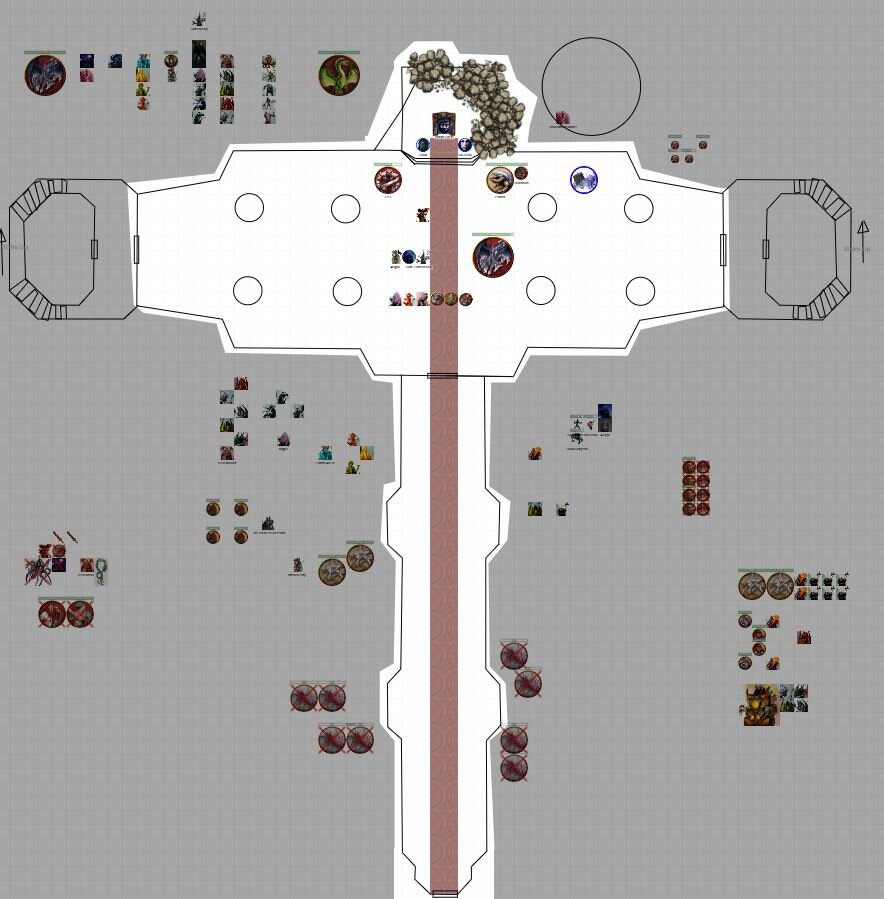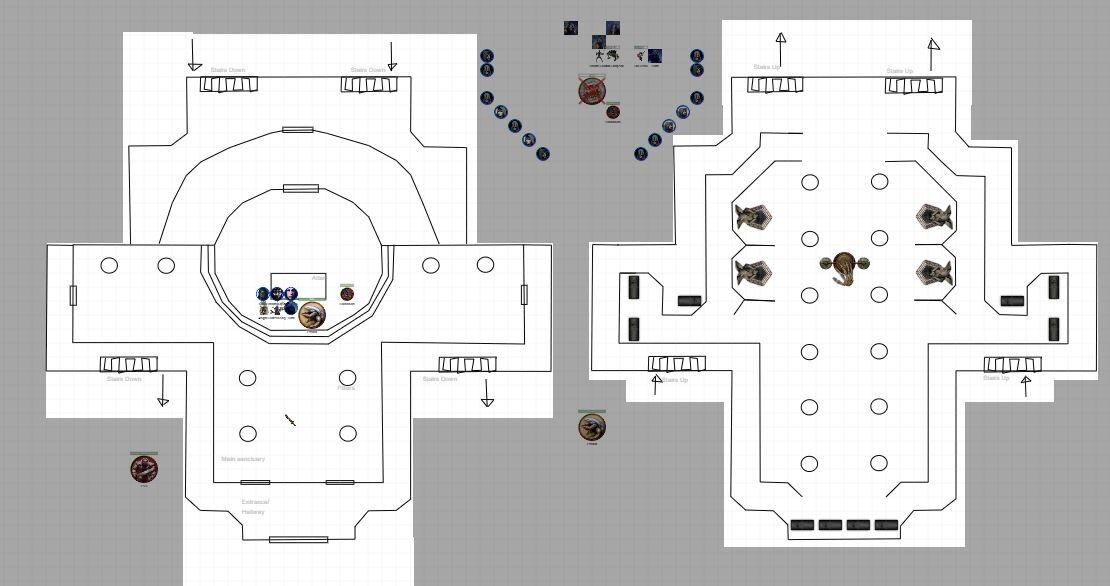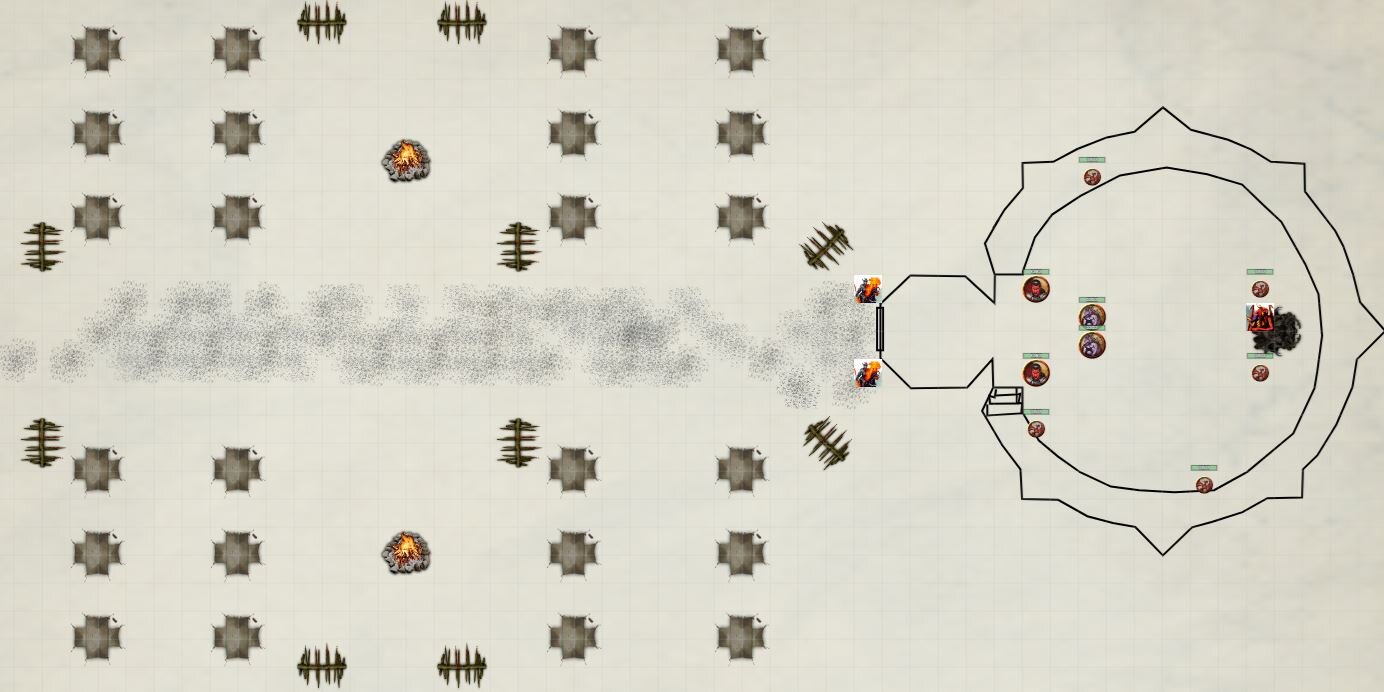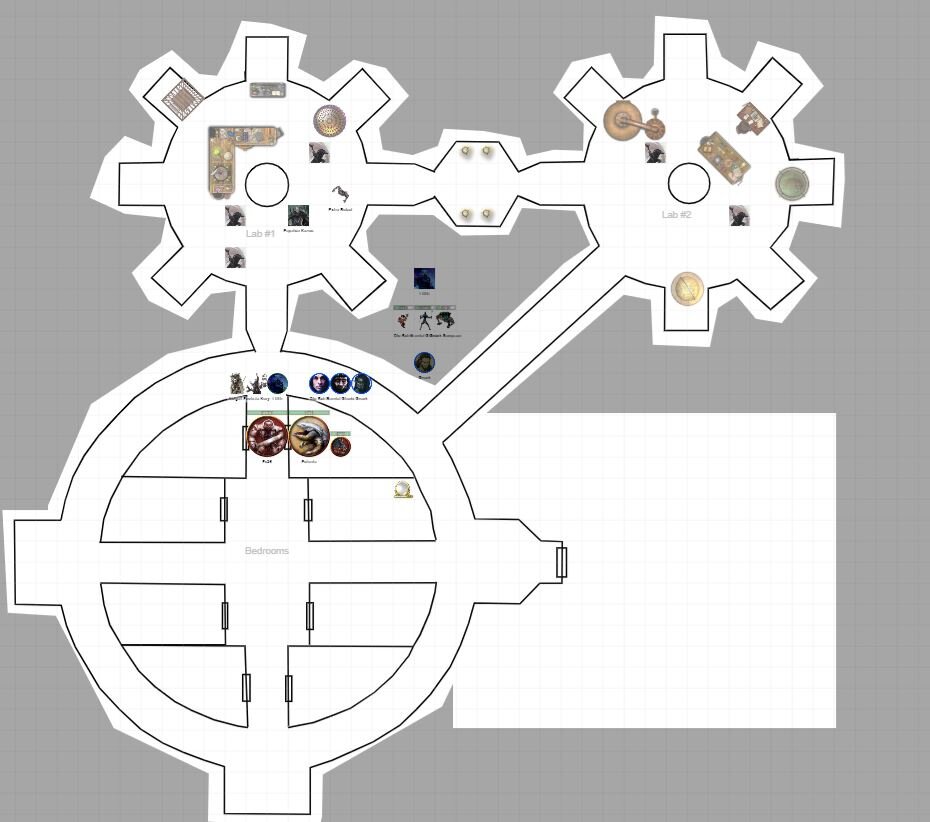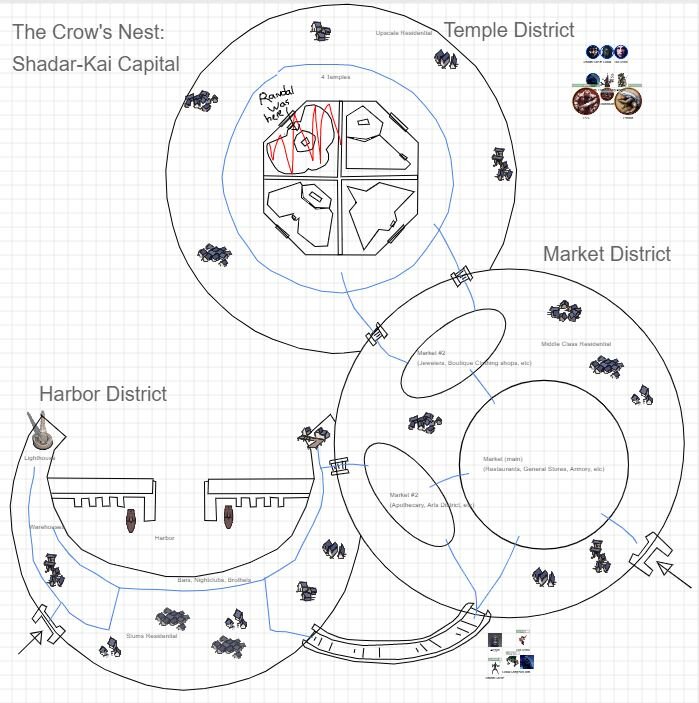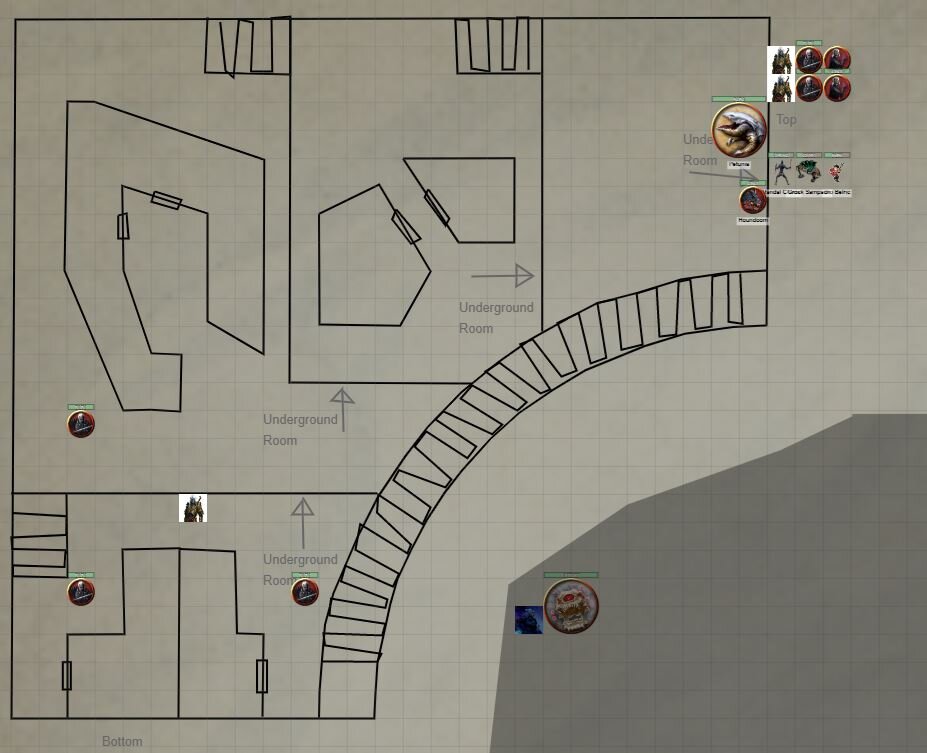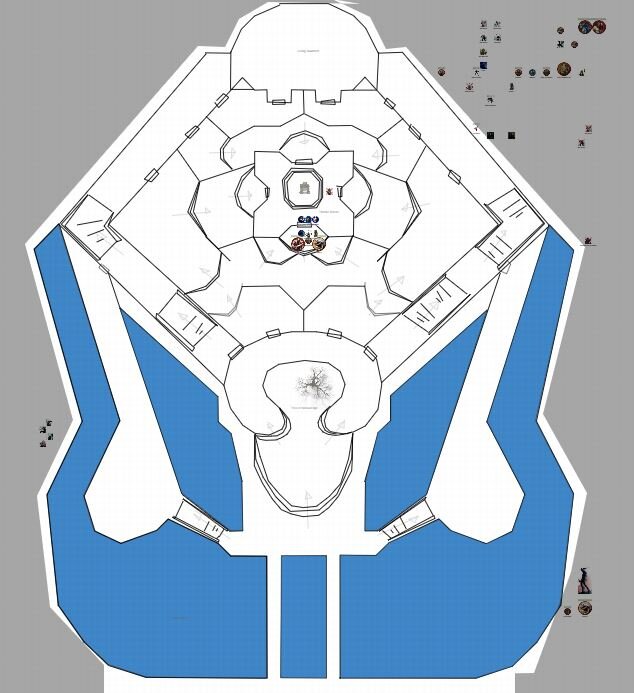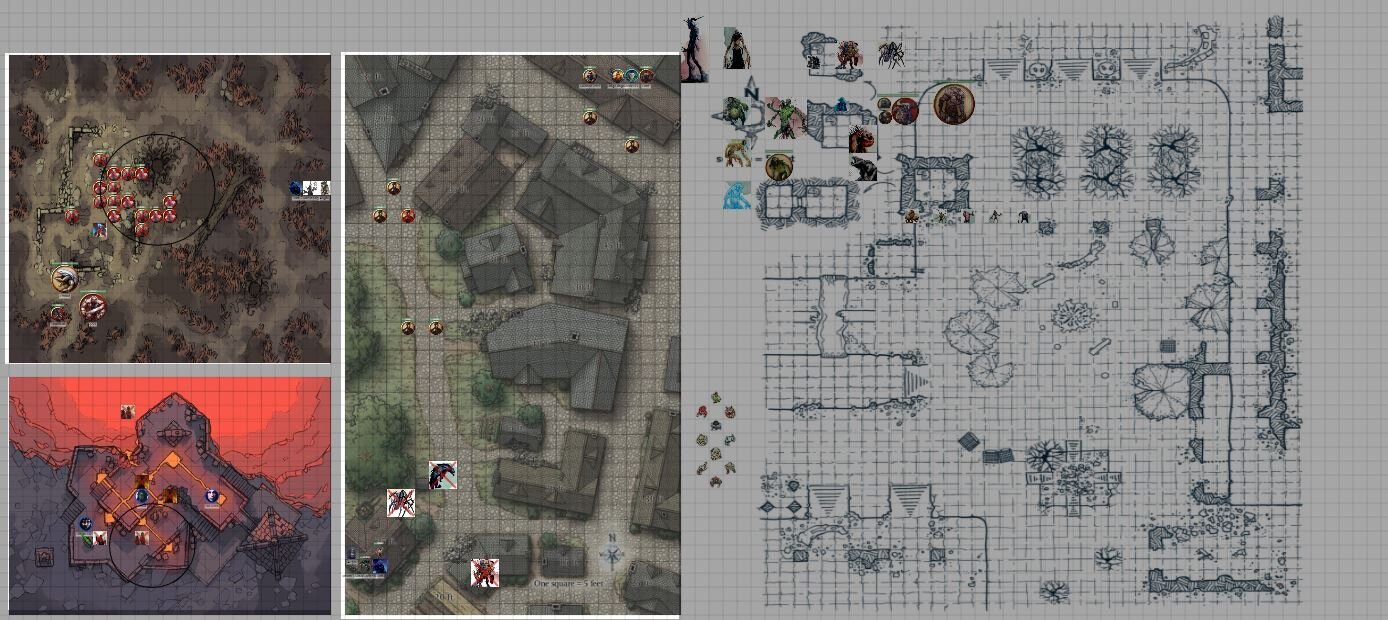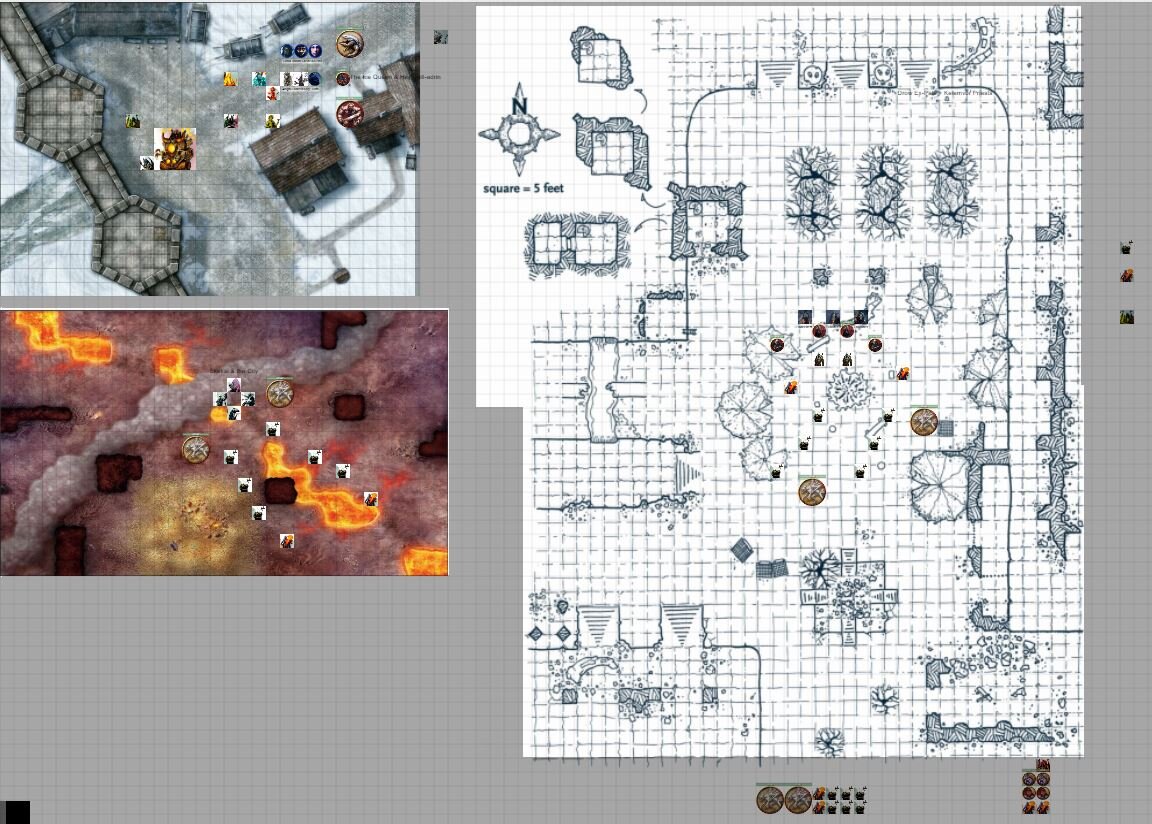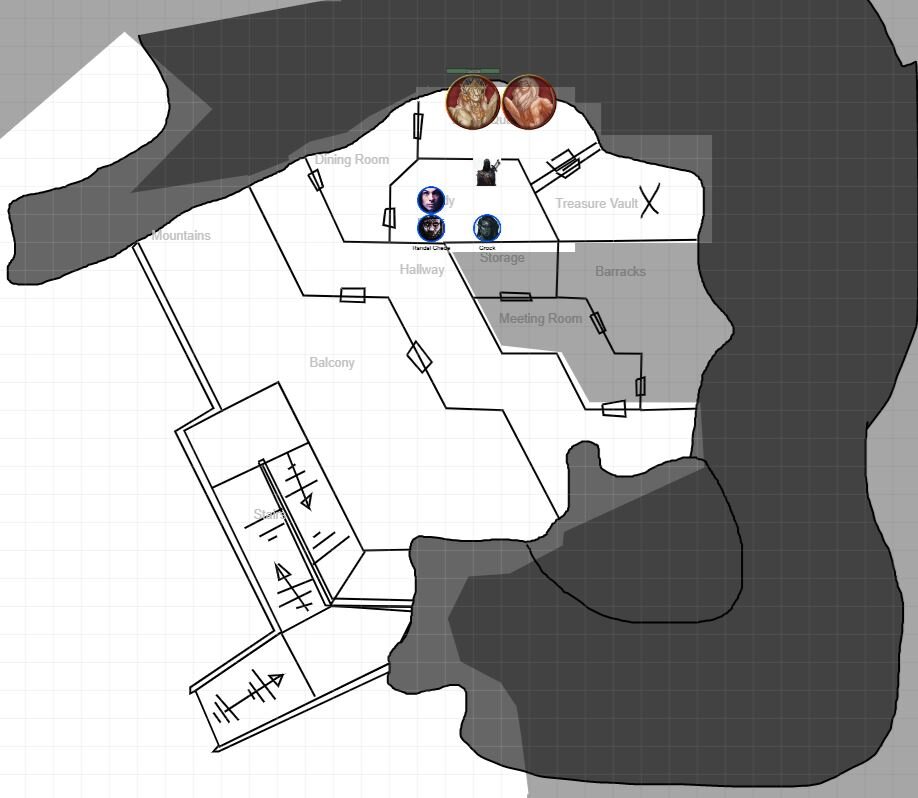What makes a memorable campaign setting?
The easy answer: The people, the places, and the things!
The world of Bahumia featured in Not Another D&D Podcast (NADDPOD) features quirky and colorful NPCs for every different location. Just think of how much more three-dimensional that, for example, The Crick is made by Ol' Cobb, Iron Deep is made by Jaina Bronzebeard, and any halfling locale by Denny Cobblepot.
Wizards of the Coast has done an excellent job exploring the Forgotten Realm's setting in Faerun through the number of campaign modules that are set throughout, as well as the Sword Coast Adventurer's Guide. And how it does this most prominently is by leading characters throughout the towns and cities, from Neverwinter to Waterdeep to Baldur's Gate to Phandalin.
What is a good quest without acquiring a legendary sword at the end? The things of D&D are key, and what good story involving Vecna would be complete without the Hand and Eye of Vecna, The Sword of Kas, and the Book of Vile Darkness, all artifacts which evoke the rich histories?
I recently ran a campaign set in The Shadowfell (dark mirror of the Material Plane), titled The Inheritance of The Shadowfell, and the player characters going from 13th to 16th level. The plot hook was, the party had killed the previous Lord of the Shadowfell when he was a guest at Dracula's Castle, and now they are journeying to The Shadowfell to take part in a contest to become the new Lords. With this in mind, how did I go about attempting to flesh out the setting in order to make a memorable campaign experience?
Before that, let's step back and take a look at the available source materials. The majority of my reading was split among Mordenkainen's Tome of Foes, the Dungeon Master's Guide, Ulraunt's Guide to the Planes: The Shadowfell (unofficial), and various searches between the Forgotten Realms, D&D, and Greyhawk wikis.
The DMG has <2 pages on The Shadowfell but does offer the Shadowfell Despair Table and a brief description of the city of Evernight (mirror-Neverwinter). Mordenkainen's Tome of Foes features a lot of creatures native to The Shadowfell and some info in their bios, as well as some more extensive lore on the Shadar-Kai and the Raven Queen, including her Fortress of Memories located in a demiplane in The Shadowfell.
Ulraunt's Guide to the Planes: The Shadowfell provides some more expansive and specific resources for the plane. This book is partially intended as an Epic level campaign reference book and focuses heavily on CR>20 creatures. The book also features zero mentions of The Raven Queen and some possible disregards for otherwise established Shadowfell canon. However, I did appreciate being able to draw from its expansions on monster lines, including Sorrowsworn, Wights, and Vampires. And although I did not feature them in the campaign I ran, the book does have exhaustive sections on 3 major Shadowfell cities: Gloomwrought, Evernight, and Thultanthar, City of Shade.
So, what did I personally contribute to the world? I'm going to focus on the locations here, though of course mentioning any key NPCs that may be inherent to a place. 8 of the 9 locations feature a playable grid map.
I will say, I never created a world map for The Shadowfell. Part of this was that it is just not part of how I conceived the world in my head. And part of this is because it wasn't necessary for exploring the world. Travel operated on the "fractional time" system, akin to the "fractional money" system (in which something costs negligible/half/all/more than the party's money, as opposed to a specific gp amount). Locations would take half a day or a day to travel to.
Overworld travel had several aspects to it. Considering half a day or full-day travel, the party could generally only visit one location a day, unless they wanted to travel overnight (which is more dangerous via increased rate of high-power random encounters). The consequence of this: things can happen while the party is away from various locations. And if they were traveling to a new location, not necessarily on their map yet, or somewhere off the main roads, there were random encounter opportunities. It's also important to note that, according to the geography, different modes of transportation were available to different places: boat, train, carriage, etc., and the consequence is that sometimes the party was not able to bring monster/construct pets along with.
But let's get on to the actual locations that I featured in The Shadowfell:
001: Dracula's Summer Home
After helping save Dracula's life ("unlife"?) in the previous campaign, this serves as a home base for the players, who are welcomed by steward and trickster Aleppa the Alp.
002: The Shadowfell Imperium
This is the centralized seat of power in The Shadowfell. A Shadow Dragon holds sway as steward and issues the quest for the party and competitor candidates to complete in contest for the throne. The quest: "Bring me the shriveled heart of the Raven Queen. There can be no king of The Shadowfell without the heart of his queen!"
003: Church of Kelemvor
This is the original cathedral and pilgrimage site in worship of Kelemvor. The party's Grave Cleric who follows Kelemvor visits but is rebuked and disavowed by the high priests there, sparking the beginnings a redemption quest which ultimately ends the party's cleric at the pulpit as high priest of the Church.
004: The Amnizu's Tower
Imagine Saruman's Tower in The Lord of the Rings: The Two Towers when the surrounding lands are overrun by Saruman's army of Uruk-hai. That it The Amnizu's Tower. The Amnizu is a devil warlord with an extensive military encampment around his tower, and he will stop at nothing to conquer The Shadowfell.
005: The Academy of Mad Sciences
This is the home of Shadar-Kai artificer Papalou Kazoo and his Kenku assistants. Papalou is an old associate of Dracula's, and the party visits to cash in on a favor after saving Dracula's life.
006: The Crow's Nest: Shadar-Kai Capitol City
This is the major city and center of commerce in The Shadowfell, and it's broken up into three class-tiered rings: The Harbor District, The Market District, and The Temple District. It's a diverse population here, including undead, shadar-kai, drow, devils, demons, fiends, material-plane-people, etc. The city, between the three districts, is home to cultists of Kyuss, a disenfranchised priestess of The Raven Queen performing death rites out of her home, a plaza of 4 temples in The Temple District, to Lolth, Wee Jas, Cyric, and The Raven Queen, and more.
007: Drow Ex-Pat Outpost
The party were accompanied to The Shadowfell by a fugitive Drow Inquisitor in search of a home away from The Underdark, hoping that this secretive colony of expatriated Drow might be it.
008: The Fortress of Memories
This is the home of The Raven Queen and final location for the Inheritance Cycle quest for Lordship, although it is currently occupied by a Lich and an infestation of Sorrowsworn.
009: Mask's Shadow Keep
This was post-adventure and served as a hopping-on point for The Central Bank of Babel story arc. The Shadow Keep is home to now-disgraced god of thieves Mask and his Sphinx companions.
EXTRA: Random Encounters
It's always important to keep a few extra maps on hand. I bought most of these from 2-Minute Tabletop. And whether it be for a random encounter while searching the wilderness for a Drow Outpost, for a grid-map to set a battle with Kyuss cultists in their backroom church, for an encounter with demons inside the extradimenisonal cells of the Mirror of Life Trapping, or a placeholder city map while the party hunts down the partners from the Law Offices of Yugo&Yugo, these maps were important, too, to the setting of The Shadowfell.
This is a broad overview of all of the locations in The Shadowfell, after the fact. But at the outset, the party began with an incomplete map and was tasked with exploring and uncovering the world. And then with visiting and revisiting each destination.
The locations served, too, as leads for quests. The party starts at Dracula's Summer Home and otherwise only knows where to find The Shadowfell Imperium and The Academy of Mad Sciences. From Dracula's Summer Home, the team is cued to visit The Shadowfell Imperium and initiate the Shadowfell Inheritance Cycle, quest for the throne. Visit the academy, and the party needs to continue on to hunt down a team of Yugoloth lawyers who are threatening Dracula's associate Papalou. Visit the Imperium, and the party is invited to The Amnizu's Tower, to be offered a "quit your pursuit of the throne, and join my army... or else" ultimatum. And the party can also spend time questioning NPCs and exploring to find the Drow Ex-Pat outpost, in assistance of the Drow fugitive whom they are accompanying.
And this is disregarding the continuations of those quest leads and character motivations that lead players to seek out The Church of Kelemvor and The Crow's Nest and so on.
This is the ultimate advantage of establishing a plurality of locations within a D&D campaign setting. There are elements of exploration. There are elements of a sandbox environment. And there are elements of a living world. Something is happening everywhere, and the party has to make a decision on what leads to follow, knowing that something consequential may be happening offscreen somewhere else.
What do you think? Do you like this approach of specific settings, each with playable grids? Or do your games put a larger emphasis on wilderness travel and overworld maps and occupying a single town throughout a campaign?
What could I have improved? How would you have differently approached surveying The Shadowfell setting?
And have I piqued your interest in The Shadowfell and the campaign I ran? Would you be interested in hearing about the NPC candidates for the Shadowfell Inheritance Cycle and their story arcs?
(screenshots of maps posted below)

